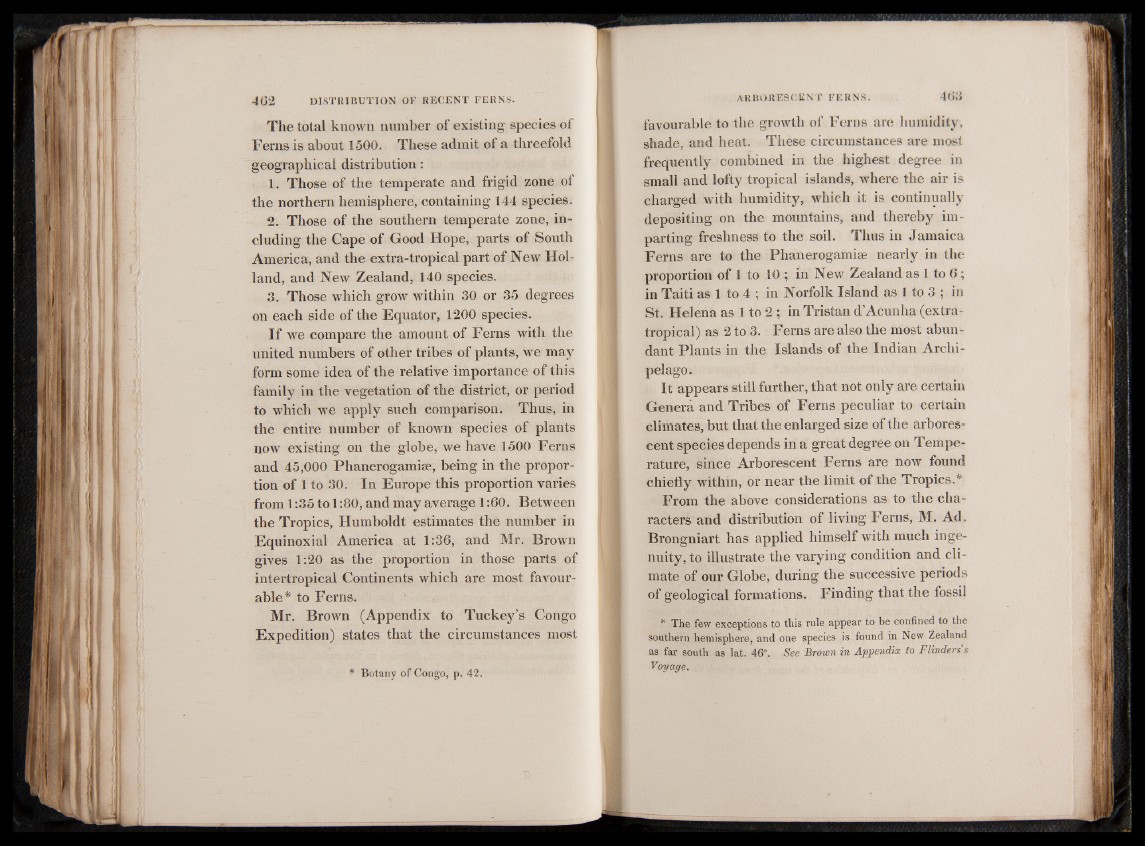
The total known number of existing species of
Ferns is about 1500. These admit of a threefold
geographical distribution:
1. Those of the temperate and frigid zone of
the northern hemisphere, containing 144 species.
2. Those of the southern temperate zone, including
the Cape of Good Hope, parts of South
America, and the extra-tropical part of New Holland,
and New Zealand, 140 species.
3. Those wdiich grow within 30 or 35 degrees
on each side o f the Equator, 1200 species.
I f we compare the amount of Ferns with the
united numbers of other tribes of plants, we may
form some idea of the relative importance of this
family in the vegetation of the district, or period
to which we apply such comparison. Thus, in
the entire number of known species of plants
now existing on the globe, we have 1500 Ferns
and 45,000 Phanerogamic, being in the proportion
of 1 to 30. In Europe this proportion varies
from 1:35 to 1:80, and may average 1 :60. Between
the Tropics, Humboldt estimates the number in
Equinoxial America at 1:36, and Mr. Brown
gives 1:20 as the proportion in those parts of
intertropical Continents which are most favourable*
to Ferns.
Mr. Brown (Appendix to Tuckey’s Congo
Expedition) states that the circumstances most
Botany of Congo, p. 42.
favourable to the growth of Ferns are humidity,
shade, and heat. These circumstances are most
frequently combined in the highest degree in
small and lofty tropical islands, where the air is
charged with humidity, which it is continually
depositing on the mountains, and thereby imparting
freshness to the soil. Thus in Jamaica
Ferns are to the Phanerogamic nearly in the
proportion of 1 to 10 ; in New Zealand as 1 to 6;
in Taiti as 1 to 4 ; in Norfolk Island as 1 to 3 ; in
St. Helena as 1 to 2 ; in Tristan d’Acunha (extra-
tropical) as 2 to 3. Ferns are also the most abundant
Plants in the Islands of the Indian Archipelago.
It appears still further, that not only are certain
Genera and Tribes of Ferns peculiar to certain
climates, but that the enlarged size of the arborescent
species depends in a great degree on Temperature,
since Arborescent Ferns are now found
chiefly within, or near the limit of the Tropics.*
From the above considerations as to the characters
and distribution of living Ferns, M. Ad.
Brongniart has applied himself with much ingenuity,
to illustrate the varying condition and climate
of our Globe, during the successive periods
of geological formations. Finding that the fossil
* The few exceptions to this rule appear to be confined to the
southern hemisphere, and one species is found in New Zealand
as far south as lat. 46°. See Brown in Appendix to Flinders s
Voyage.